Hello! Click on one of our members below to chat on Whatsapp
This is our Step by Step guide to camping on the Inca Trail with Orange Nation. We will answer all the FAQ´s about camping on the Inca Trail. Find out why people regard camping with Orange Nation as one of the most comfortable and rewarding experiences they have had.
Inca campsites are regulated in an effort to minimize the environmental impact. You cannot just arrive at a random spot and set-up camp. All campsites are clearly marked and have to be booked in advance by an authorized tour operator, after they have booked your Inca Trail permits. There are about 9 campsites in total, all with a very similar set-up. The distance walked on each day is influenced by campsite selection. Campsites have different views of the scenery and landscapes, making some spots more popular than others. Campsites include basic amenities like toilets (not the most sanitary), large open areas and a couple of them even have cold showers.
There are 9 campsites on the Inca Trail. Namely: Mesqay, Rumi Chaca Huayllabamba, Ayapata, Llullapata, Pacaymayo, Chaki Cocha , Phuyupatamarca and Wiñaywayna. Tour operators cannot give you the option to choose your own campsites because they can only book what is available. And they only know what is available after booking the Inca Trail permits.
This is the most coveted group and the campsites are mostly less crowded. Some of the campsites are at higher altitudes and need a trekker that is sufficiently acclimated to the altitude. There are limited tickets available and they move fast. If you wish to use these campsites then we recommend booking the Inca Trail several months in advance. For those looking for peace and tranquility than this is the ideal campsite combination.
Tour operators mostly choose this option. Among other reasons, there are plenty of spots available and it also gives the hiker some time to slowly adjust to the altitude. On the other hand, these campsites are usually crowded, especially during high-season. You also have less time to visit the must-see site of Wiñay Wayna compared to option 1.
Normally, if you book the last available tickets and most campsites are taken, you will very likely end up getting this combination. There is however a silver lining here, because companies seldom go for these campsites, the campsites are virtually deserted and you pass fewer people in various spots along the trail. The downside is really the logistics of the third campsite. Phuyupatamarca is 6 hours from Machu Picchu, which means you will miss out on an amazing opportunity to watch the breathtaking sunrise over Machu Picchu. However, Phuyupatamarca is actually an incredible Inca archeological site. It´s located high in a cloudy mountain. It is one of the most beautiful viewpoints with panoramic views of the entire Urubamba Valley.
The trekking team brings along with them a large dining and kitchen tent. At camp, the interior is then decorated and set-up with chairs, a table and cutlery. This is where everybody gets together for meals and to socialize, getting to know each other along the trek. The best amenity has to be the portable camping toilet. The toilet is private and sanitary and a welcomed relief from the government supplied facilities which are not clean. The porters always make sure to set it a comfortable distance from the sleeping tents, but not so far that its a challenge to go to especially during the nights.
Sleeping tents are 4 season igloo waterproof and spacious Eureka tents. Our large tents sleep just 2 people, leaving plenty of leg room to spread out and space to store your duffel bags. In addition, a complimentary foam mattress is supplied, to insulate you from the ground.
The equipment is of the highest quality and offers a deluxe and luxurious camping experience.
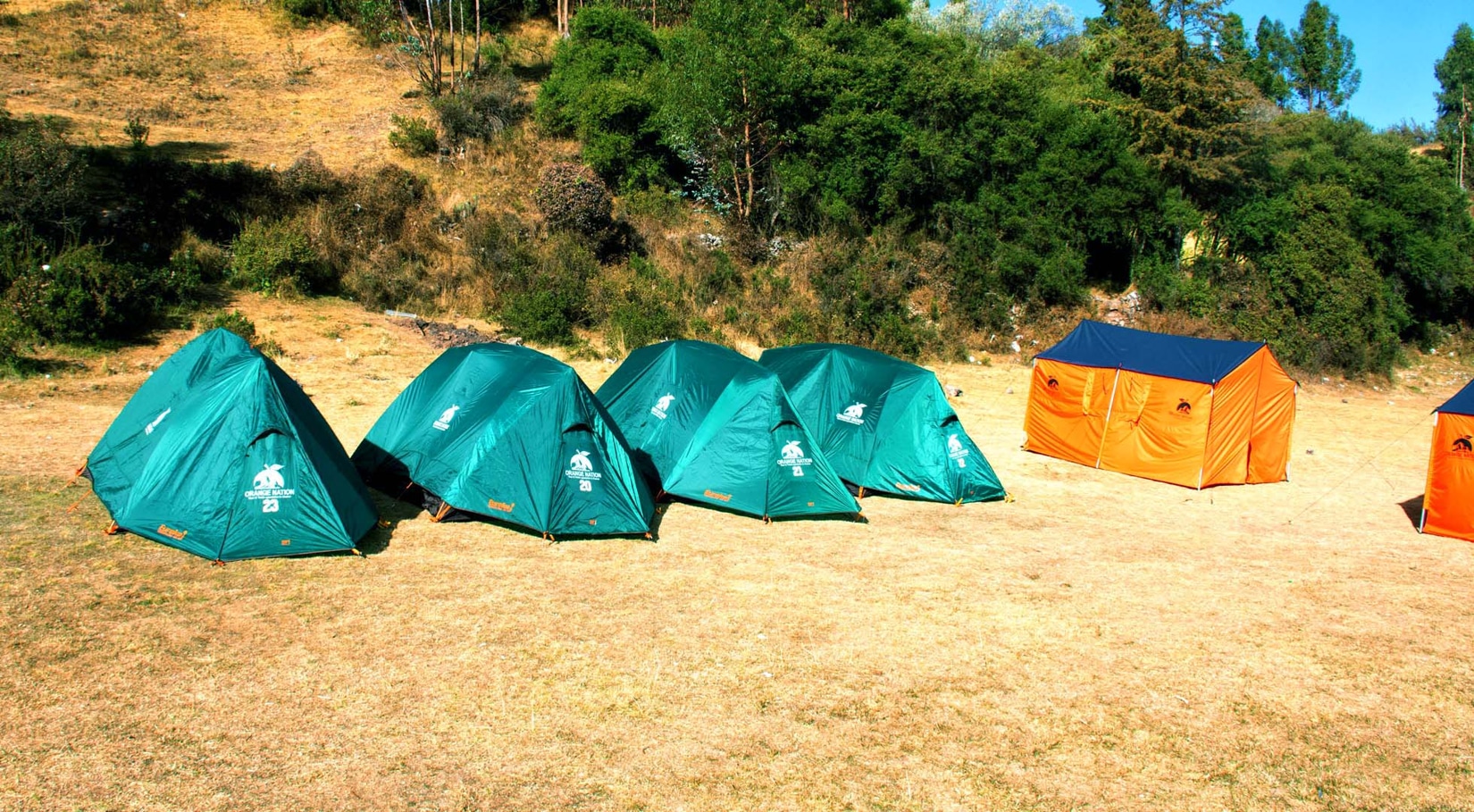
You are welcome to bring your own air mattress, sleeping bag and walking poles. However, these items can be very cumbersome. Trekking poles even more so, and can unnecessary trigger airport security alarms. You can easily rent any of the above from Orange Nation for just $20USD per person per item. The Therma Rest Air mattress adds an extra layer of comfort, whereas, walking poles give support to your knees and grip when traversing on slippery and steep inclines and declines.
To start with, toilets on the Inca Trail are not a version of modern plumbing, so be prepared. Firstly, flushing toilet paper is not permitted anywhere in Peru, which will leads to a pungent smell when entering the restrooms. Toilet paper also does not come standard in a Peruvian bathroom. So, we highly recommend bringing your own roll of toilet paper with hand sanitizer. Toilet paper is usually placed in a bin adjacent to the toilet. However, when a bin is omitted, you will find piles of used paper in the corner of the room. Its a gag inducing experience, that is really unpleasant.
Toilets are standard in the campsites. But once you start trekking, you will sporadically find toilet blocks that are hidden from the trail. There are periods where you might be forced to use natures restroom, squatting behind a tree, stump or rock. The toilets are also very interesting , they are built into the ground and you kind of need to squat, aim and try not to miss.
Luckily for those trekking with Orange Nation, we bring our own private, sanitary and toilet. Its use is specifically reserved only for Orange Nation trekkers.
All in all, whichever tour operator you go with, we recommend triple checking that they provide a portable private toilet.
Food on the Inca Trail is highly dependent on the tour operator and their standards. With Orange Nation, you can expect a dining experience that can rival the best restaurants in the Cusco region. Each trip takes a well-trained chef and assistant to prepare healthy and nutritious meals. Our menus are designed by Fortunato, our head chef, who has worked in some of the best restaurants in Cusco. Each year we run a 1-week training course for our cooks, re-enforcing food hygiene and updating our menus. You can look forward to abundant, nutritionally dense and freshly prepared meals. There are 4 standard meal times, breakfast, lunch, afternoon tea and dinner. There is also a wide variety of local drinks to accompany the meals, like herbal teas and fresh fruit juices. Below we provide a sample menu that is subject to change without prior notice.
We always start with a hot cup of coca tea served whilst you are snuggled inside your tent. Because of the energy needed for the hike, breakfasts are always abundant and nutritionally dense. Here is a short list of some the dishes you can look forward to: Oatmeal, toast with butter and jam, pancakes, fruit salad, yoghurt, omlettes and on the 3rd and last breakfast of the trek, enjoy a surprise breakfast cake baked in the great outdoors from scratch.
Lomo Saltado (rice, steak and fries), Seco de frejoles (beef and bean stew), Arroz con pollo (rice and chicken), Papa la Huancaina (potatoes with spicy yellow sauce, lettuce, olives and boiled egg), and soo much more.
Stuffed avocados, grilled chicken drumsticks, steamed trout, Asparagus dish, Spaghetti with a variety of sauces, beetroot salad, stuffed chicken and different fresh salads to accompany the meals.
Chocolate Pudding, Maizena ( hot dessert) and peach slices with jelly and wine.
Quinoa soup, vegetable soup and corn soup.
Herbal teas (chamomile tea, lemongrass, English breakfast tea, black tea and coca tea). Juices: Berry juice, passion fruit juice.
Note: Most meals can be adjusted to accommodate most dietary requirements. You need to communicate any dietary restrictions at booking.
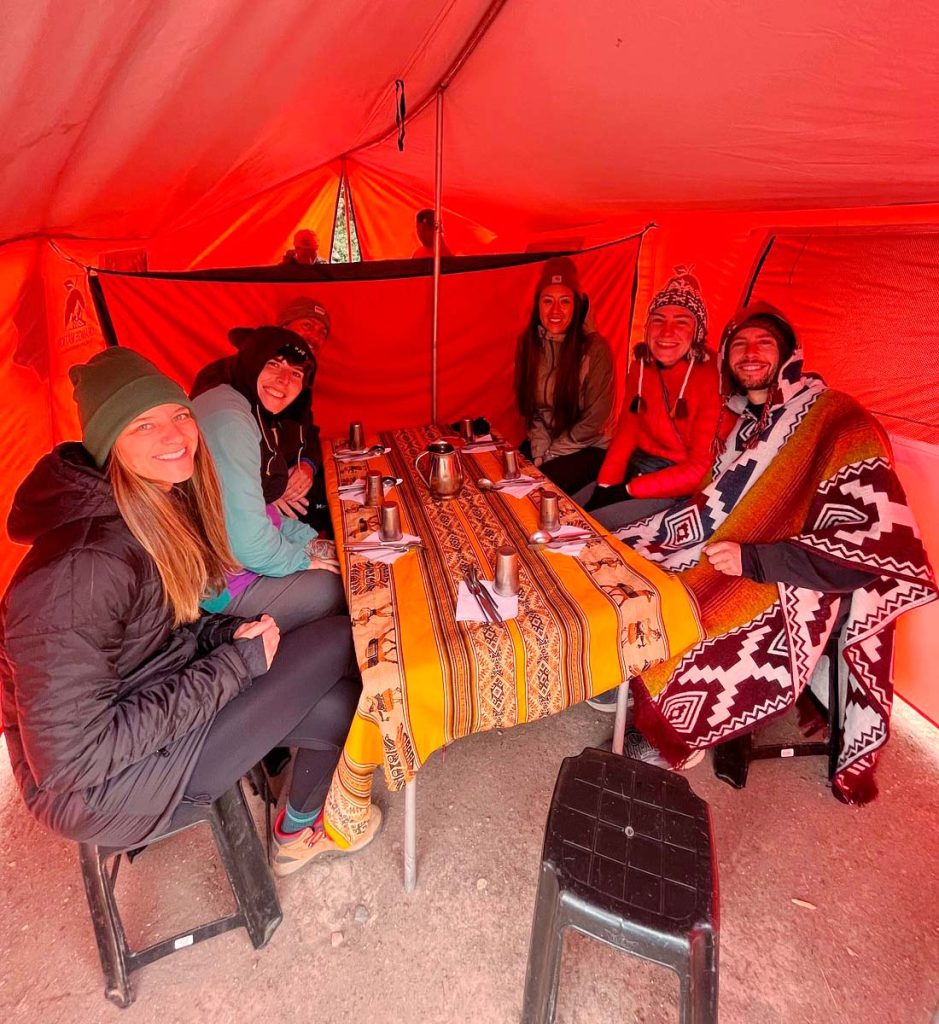
The Inca Trail uses porters to carry luggage , camping gear and much more. During your briefing, your tour operator will hand you a duffel bag to pack only the essentials for your trek. The duffel bad cannot weigh more than 7kg/15lbs including the weight of the sleeping bag. Sleeping bags typically weigh around 2kg/4lbs. The porters are there for your convenience, so you can do this moderate to challenging trek without the added difficulty of carrying a heavy load. You only hike with your small-day pack with your day to day essentials. The porters are always ahead of you on the trail and only have access to duffel bag at camp at the end of the day. Most importantly, the weight limit has been set by the Peruvian government to protect the health of the porters.
Unfortunately, horses and mules are not permitted on the Inca Trail because they cause serious damage to the stone and structure of the trail. So, being able to use porters is a true blessing. We cannot praise these hardworking individuals enough. Not only do they carry all the luggage, but they also work behind the scenes setting up camp, helping with meal preps and get it all done before you arrive at camp. They are one the reasons for the seamless and effortless trekking on the Inca Trail.
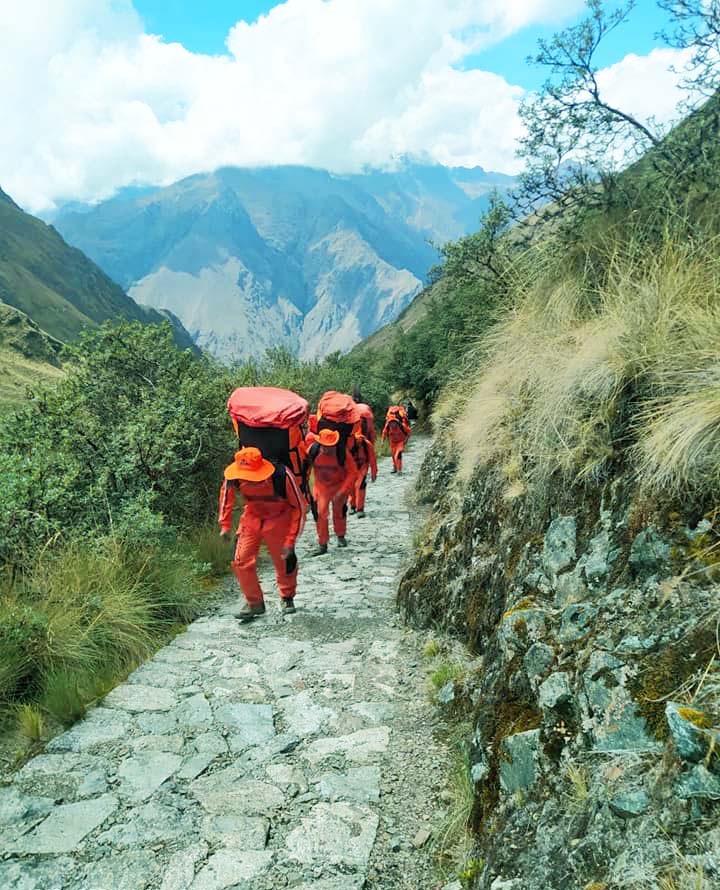
Generally, tap water is not safe to drink in Peru. We recommend bringing a large (1,5 liter) refillable water bottle. Disposable water bottles are not permitted on the Inca Trail and at Machu Picchu. If you have smaller bottles, then its a good idea to bring more than one. It´s imperative to keep drinking fluids at high altitude because you can easily get dehydrated. We provide boiled water at camp after meal times to refill your water bottles.
Breakfast on the first day is not included, as well as lunch and dinner on Day 4. Every other meal is catered for. We recommend going through a tour operators itinerary before booking, which should provide more details into what´s included and not included.
The simple answer here is no. What makes this trail special is the fact that it has kept the original built by the Incas more than 600 years ago. There are no modern constructions anywhere on the trail. However, if you choose the 5-Day Inca Trail, trekking and camping culminates on Day-4. You then take a shuttle bus to small town of Aguas Calientes. Where you spend the night in a hotel before returning to Machu Picchu early the next morning by shuttle bus.
Check out: Our Treks into Machu Picchu! The best way to avoid the crowds, with fixed departure reduced price available!
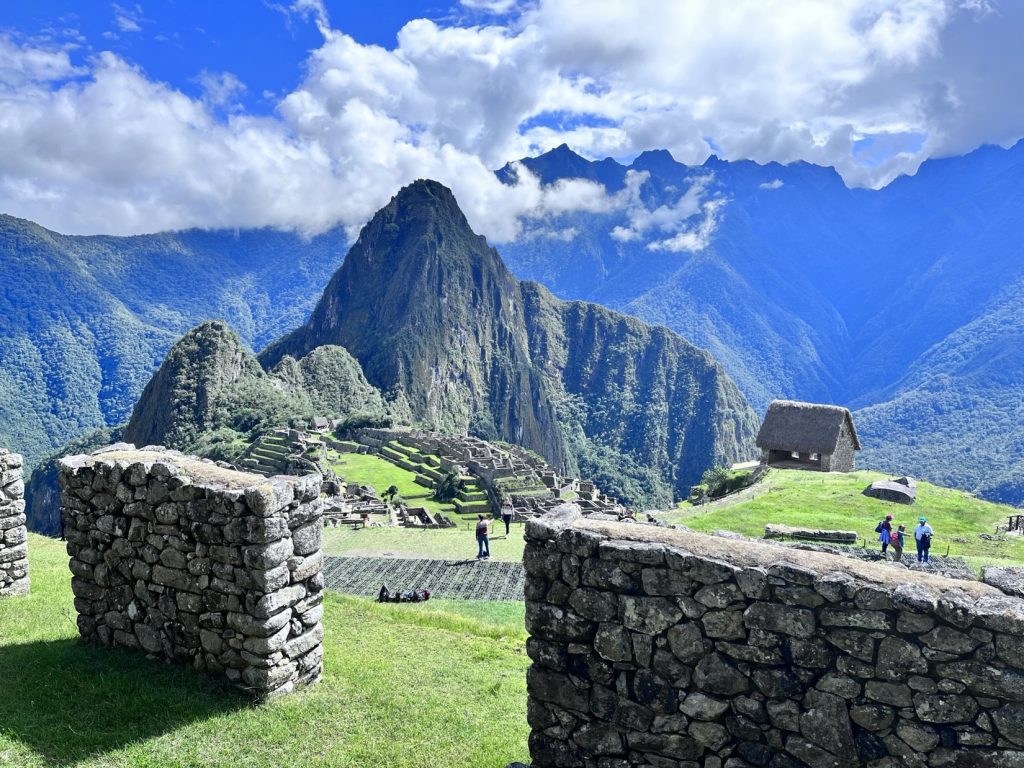

Comfortable lodging near the ruins of Ollantaytambo, in the Sacred Valley of the Incas
Learn More
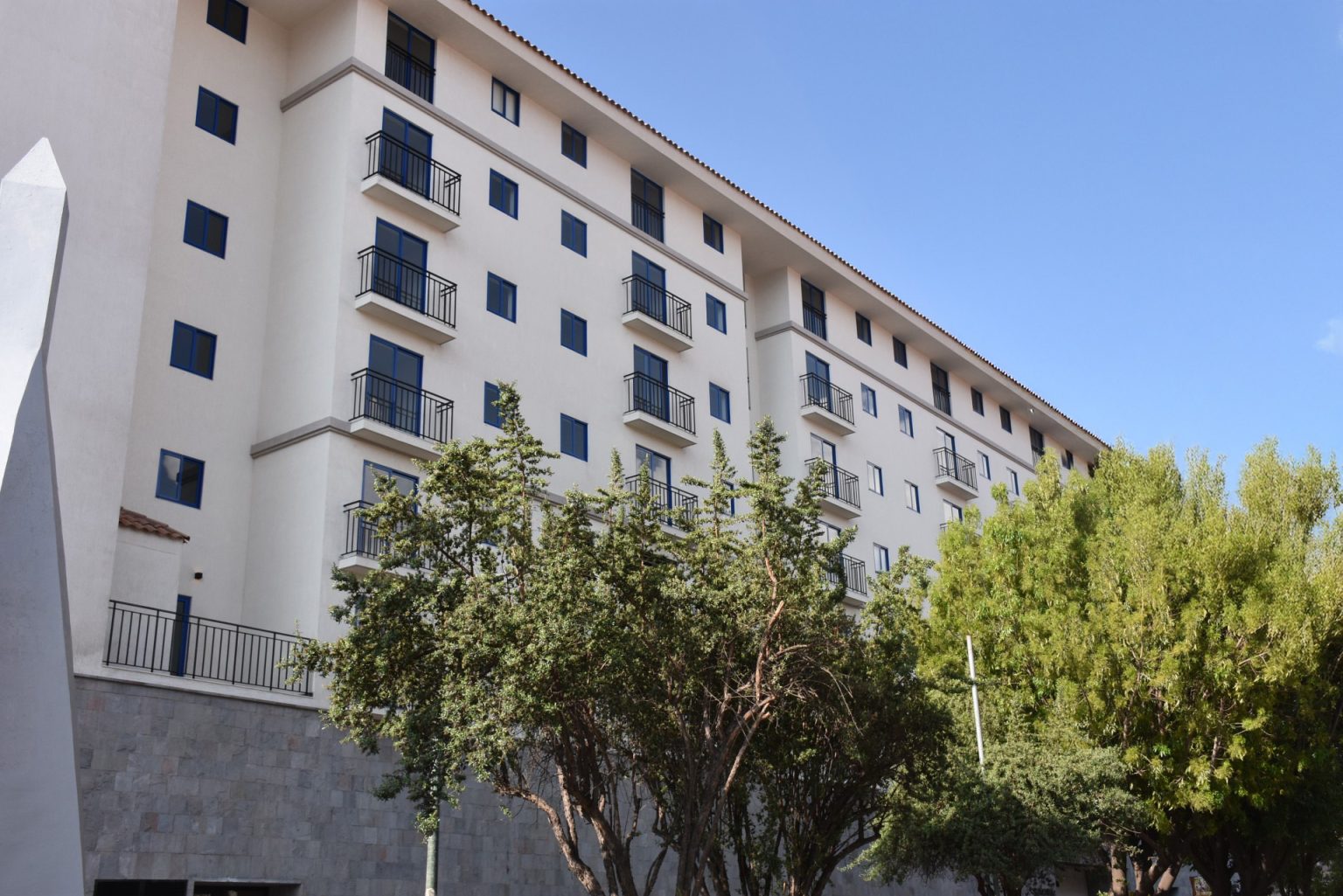
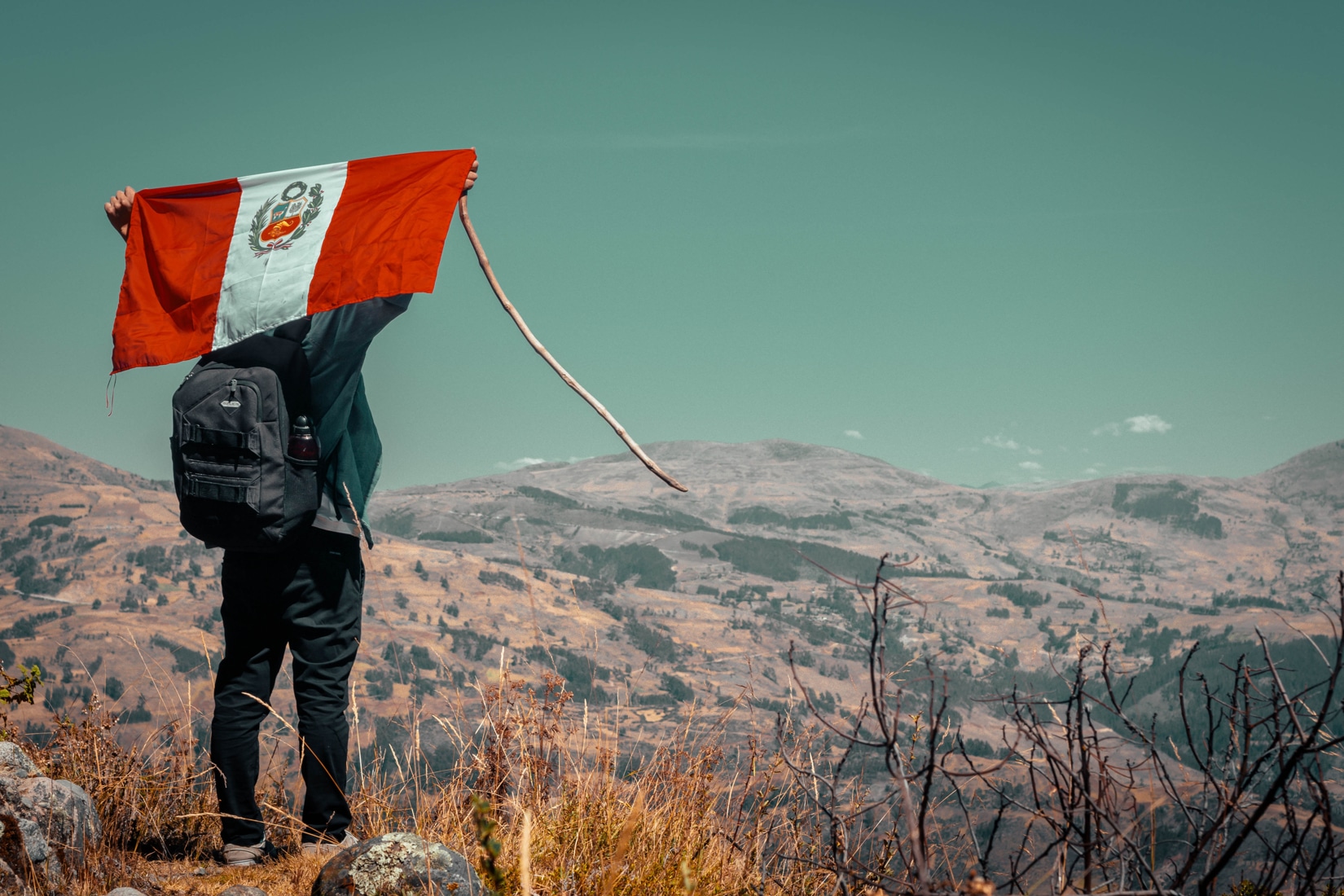
Travelling with children or teens in Peru is a different experience than travelling solo or as a couple; extra planning is required. This article will give you what you need to know to organize an unforgettable family trip to Peru. Peru is an excellent destination for children of all ages, all guaranteed to have a […]
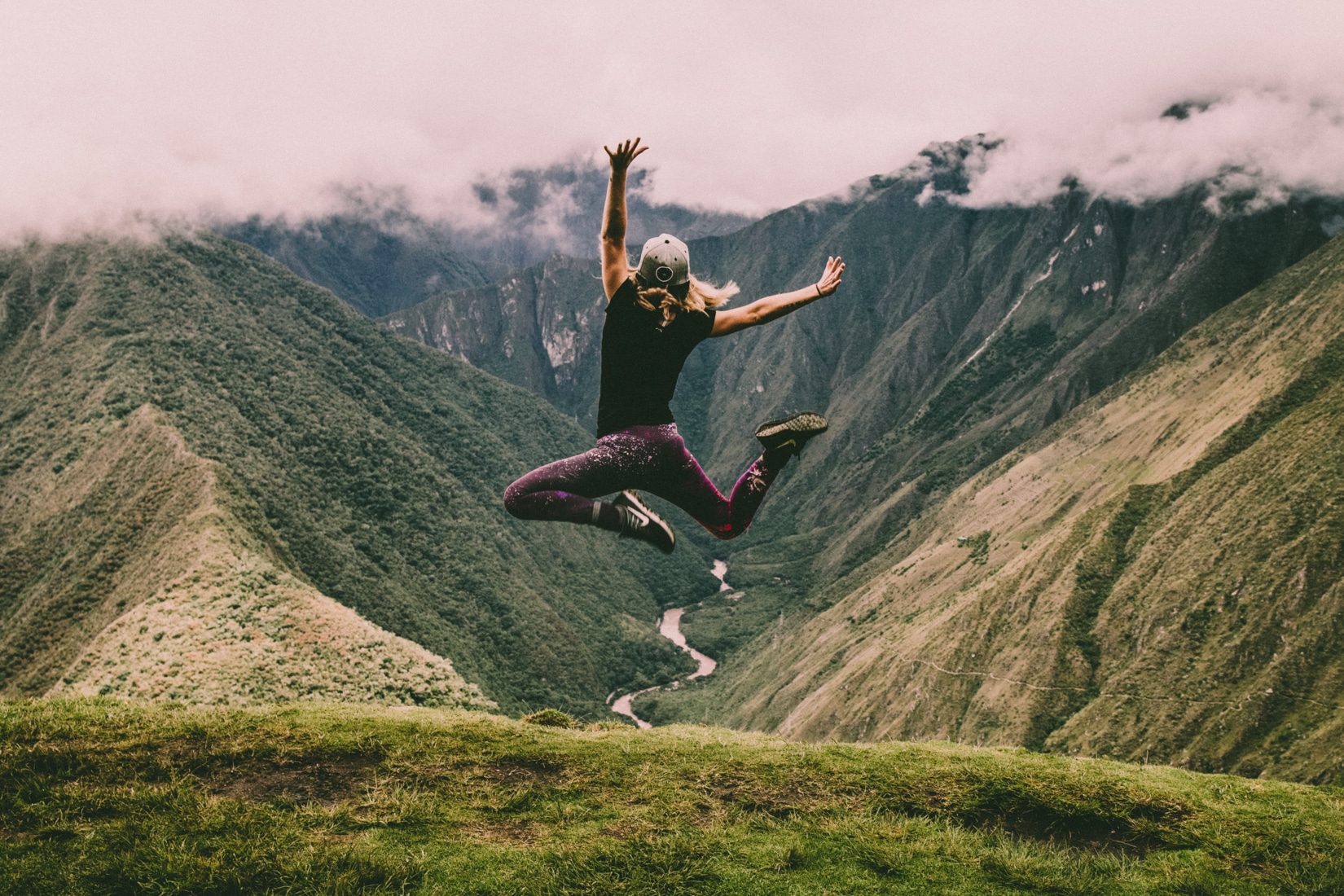
The Inca Jungle Trek to Machu Picchu is the perfect adventure trek for the thrill seekers among you. Start your adventure with downhill mountain biking, which leads to a lookout point with breath taking views of the Andean landscape. After, enjoy an exhilarating experience white water rafting down the Urubamba river. If that wasnt enough, […]
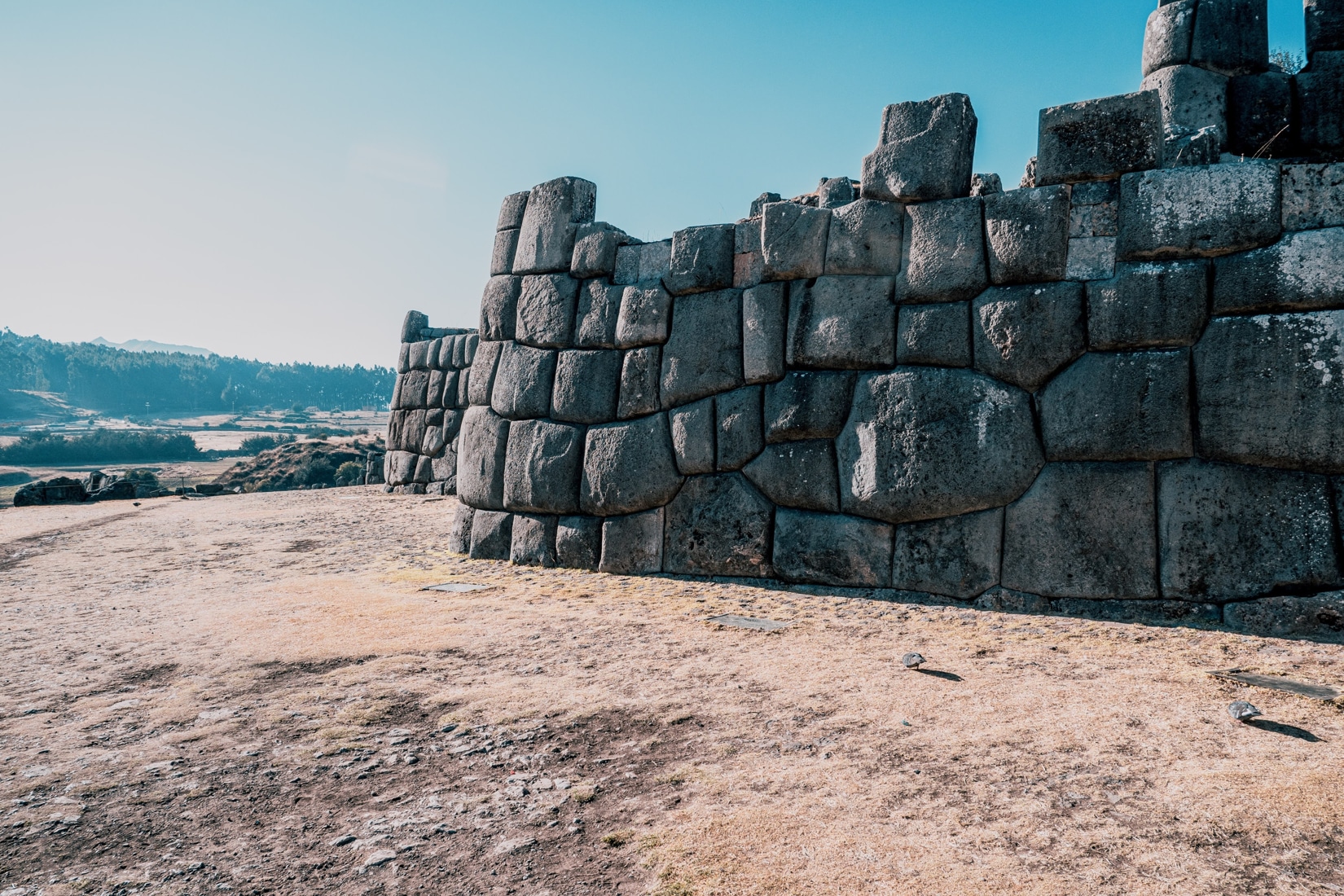
Sacsayhuamán is one of the most imposing and mysterious structures in the world. It contains 3 layers of zigzag walls made from megalithic stone. Just above Cusco you will find the enigmatic structure of Sacsayhuaman. Historians and archeologists believe that it was constructed around the 15th century during the reign of the most successful Inca […]
Discover why thousands of people around the world trust us to explore the best of Peru.
Couples
Trip to Rainbow mountain. First to the mountain thanks to Yair’s expert driving and special thanks to Cristian for being my guide. Highly recommend!
Written July 2, 2025
Family
We had an incredible experience hiking the Inca Trail with Ray as our guide. Ray was amazing. He was super knowledgeable about the history of the Incas, and he brought that history to life. We visited three larger sites, and several smaller ones that we arrived at by foot deep in the Peruvian jungle. Ray's was an incredible, passionate, and experienced guide, and also just a great person we are lucky to have met. I also have to mention Moses, our porter who made an amazing lunch and hiked it up to our resting spot 2000 ft above the Urambamba River to Wiñaywayna.
Written July 4, 2025
Family
Did the short inca trail through sam travel and it was an unforgettable experience. Hiking from the train to the Sun Gate with its beutiful views of macchu piccu was incredible. Our guide, Ray, was extremely knowledgeable, passionate, and always positive. At every location and along the way he had fascinating information to share and no question went unanswered.
Written July 4, 2025
Family
We had a great experience with our guide Cristian during our visit to the Sacred Valley and Machu Picchu. He shared clear and detailed explanations, with a fascinating historical narrative that helped us truly connect with the places we explored. I learned so much thanks to him. The atmosphere was also really positive and friendly throughout the tour. Highly recommended!
Written June 26, 2025